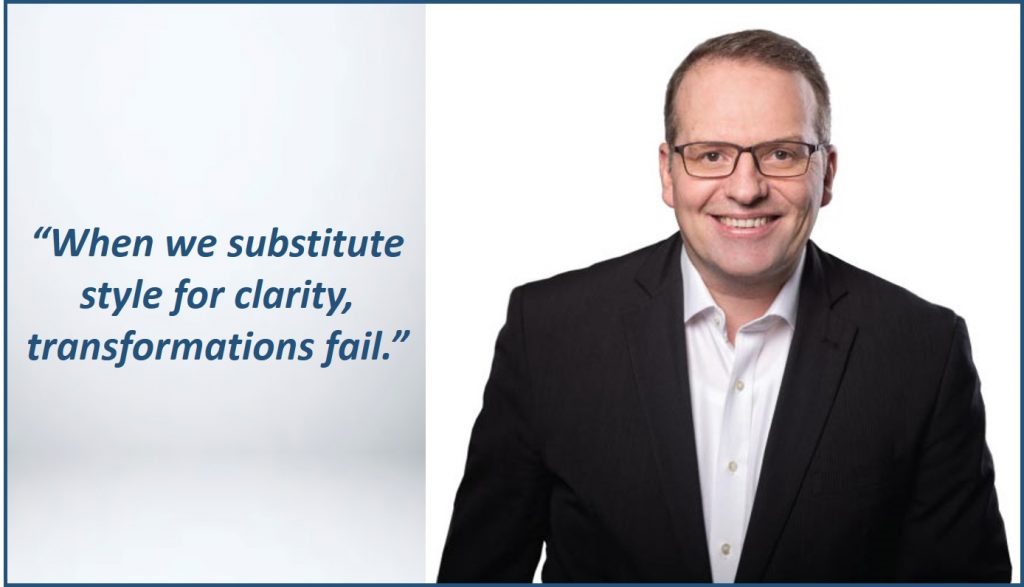Style before substance in business is fatal. When we substitute style for clarity, transformations fail.
Style before substance has dominated politics for decades. Back in the 1990s, Tony Blair talked about the “The Third Way”, but never defined it beyond abstract principles. Gerhard Schröder copied him with the “Neue Mitte” – the new middle. Obama said, “Yes we can” and left everyone to dream what they could or could not do. In this sense, the styles of Trump, Bolsonaro and the Brexiteers are (sadly) nothing new, just more extreme.
Low attention spans and carefully scripted messages dominate our media world. It’s becoming difficult to know what leaders believe. It even harder to know what they stand for.
Where to start?
A good place to start business transformation is clarity on three dimensions:
- Customer needs – an in-depth understanding of what customers want and why they buy from you
- Top team clarity – the top management team sets a clear strategic direction
- Organisational needs – the new structure, systems, processes and people to achieve the strategy.
Transformation succeeds or fails at the intersection of three dimensions.
Clarity – not slogans or communication style – speeds up transformations.
Consider one global company, the top team had launched a transformation program called: Forward to 2021. This is a three-year, company-wide transformation initiative.
The initial reaction was sceptical. As one employee put it, “Forward to 2021 sounds like Back to the Future.” Another person said it sounded more like a struggling political party, on the fringe of mainstream politics.
Once again, clarity came second, far behind the fancy communications plan for Forward to 2021. Nobody on the top management team could or would define it beyond abstract statements like, “Get close to the customer” and “Quality service through digital channels.”
With Forward to 2021 reduced to meaningless slogans, most managers and employees were already betting that the transformation would fall apart.
Without a clear direction, but with an honest desire to do their best, each business unit manager followed their own agenda. What else would they do?
Doing it differently
Clarity emerges and transformations succeed at the point:
- when we understand what customers want;
- when the top management team sets a clear direction; and
- when managers are aware of the what the organisation needs to bring that change about (i.e. changes to the structure, systems, processes and people).
Getting to this point is hard work. Above all, it takes ambitious aims, executive courage, trust in others and reality-based dialogs.
Striving for that clarity makes the message meaningful. And it makes it stick.
For sure, not everyone in the company will like what you say. But the joy is in building and re-building a company that serves its customers well and can transform itself successfully.
















